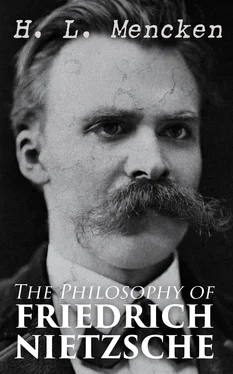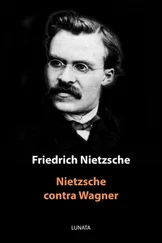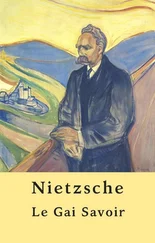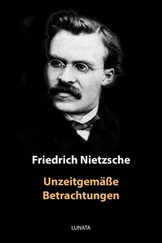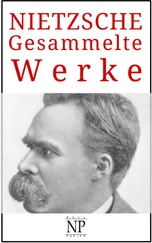H. L. Mencken - The Philosophy of Friedrich Nietzsche
Здесь есть возможность читать онлайн «H. L. Mencken - The Philosophy of Friedrich Nietzsche» — ознакомительный отрывок электронной книги совершенно бесплатно, а после прочтения отрывка купить полную версию. В некоторых случаях можно слушать аудио, скачать через торрент в формате fb2 и присутствует краткое содержание. Жанр: unrecognised, на английском языке. Описание произведения, (предисловие) а так же отзывы посетителей доступны на портале библиотеки ЛибКат.
- Название:The Philosophy of Friedrich Nietzsche
- Автор:
- Жанр:
- Год:неизвестен
- ISBN:нет данных
- Рейтинг книги:4 / 5. Голосов: 1
-
Избранное:Добавить в избранное
- Отзывы:
-
Ваша оценка:
- 80
- 1
- 2
- 3
- 4
- 5
The Philosophy of Friedrich Nietzsche: краткое содержание, описание и аннотация
Предлагаем к чтению аннотацию, описание, краткое содержание или предисловие (зависит от того, что написал сам автор книги «The Philosophy of Friedrich Nietzsche»). Если вы не нашли необходимую информацию о книге — напишите в комментариях, мы постараемся отыскать её.
The Philosophy of Friedrich Nietzsche — читать онлайн ознакомительный отрывок
Ниже представлен текст книги, разбитый по страницам. Система сохранения места последней прочитанной страницы, позволяет с удобством читать онлайн бесплатно книгу «The Philosophy of Friedrich Nietzsche», без необходимости каждый раз заново искать на чём Вы остановились. Поставьте закладку, и сможете в любой момент перейти на страницу, на которой закончили чтение.
Интервал:
Закладка:
IV. THE PROPHET OF THE SUPERMAN
Table of Contents
Nietzsche spent the winter of 1879-80 at Naumburg, his old home. During the ensuing year he was very ill, indeed, and for awhile he believed that he had but a short while to live. Like all such invalids he devoted a great deal of time to observing and discussing his condition. He became, indeed, a hypochondriac of the first water and began to take a sort of melancholy pleasure in his infirmities. He sought relief at all the baths and cures of Europe: he took hot baths, cold baths, salt-water baths and mud baths. Every new form of pseudo-therapy found him in its freshman class. To owners of sanatoria and to inventors of novel styles of massage, irrigation, sweating and feeding he was a joy unlimited. But he grew worse instead of better.
After 1880, his life was a wandering one. His sister, after her marriage, went to Paraguay for a while, and during her absence Nietzsche made his progress from the mountains to the sea, and then back to the mountains again. He gave up his professorship that he might spend his winters in Italy and his summers in the Engadine. In the face of all this suffering and travelling about, close application, of course, was out of the question. So he contented himself with working whenever and however his headaches, his doctors and the railway time-tables would permit—on hotel verandas, in cure-houses and in the woods. He would take long, solitary walks and struggle with his problems by the way. He swallowed more and more pills; he imbibed mineral waters by the gallon; he grew more and more moody and ungenial. One of his favorite haunts, in the winter time, was a verdant little neck of land that jutted out into Lake Maggiore. There he could think and dream undisturbed. One day, when he found that some one had placed a rustic bench on the diminutive peninsula, that passersby might rest, he was greatly incensed.
Nietzsche would make brief notes of his thoughts during his daylight rambles, and in the evenings would polish and expand them. As we have seen, his early books were sent to the printer as mere collections of aphorisms, without effort at continuity. Sometimes a dozen subjects are considered in two pages, and then again, there is occasionally a little essay of three or four pages. Nietzsche chose this form because it had been used by the French philosophers he admired, and because it well suited the methods of work that a pain-racked frame imposed upon him.
He was ever in great fear that some of his precious ideas would be lost to posterity—that death, the ever-threatening, would rob him of his rightful immortality and the world of his stupendous wisdom—and so he made efforts, several times, to engage an amanuensis capable of jotting down, after the fashion of Johnson's Boswell, the chance phrases that fell from his lips. His sister was too busy to undertake the task: whenever she was with him her whole time was employed in guarding him from lion-hunters, scrutinizing his daily fare and deftly inveigling him into answering his letters, brushing his clothes and getting his hair cut. Finally, Paul Rée and another friend, Fräulein von Meysenbug, brought to his notice a young Russian woman, Mlle. Lou Salomé, who professed vast interest in his work and offered to help him. But this arrangement quickly ended in disaster, for Nietzsche fell in love with the girl—she was only 20—and pursued her over half of Europe when she fled. To add to the humors of the situation Rée fell in love with her too, and the two friends thus became foes and there was even some talk of a duel. Mlle. Salomé, however, went to Rée, and with his aid she later wrote a book about Nietzsche. 1Frau Förster-Nietzsche sneers at that book, but the fact is not to be forgotten that she was very jealous of Mlle. Salomé, and gave constant proof of it by unfriendly word and act. In the end, the latter married one Prof. Andreas and settled down in Göttingen.
Early in 1881 Nietzsche published " Morgenröte " ("The Dawn of Day"). It was begun at Venice in 1880 and continued at Marienbad, Lago Maggiore and Genoa. It was, in a broad way, a continuation of "Menschliches allzu Menschliches ." It dealt with an infinite variety of subjects, from matrimony to Christianity, and from education to German patriotism. To all the test of fundamental truth was applied: of everything Nietzsche asked, not, Is it respectable or lawful? but, Is it essentially true? These early works, at best, were mere note-books. Nietzsche saw that the ground would have to be plowed, that people would have to grow accustomed to the idea of questioning high and holy things, before a new system of philosophy would be understandable or possible. In " Menschliches allzu Menschliches " and in "Morgenröte " he undertook this preparatory cultivation.
The book which followed, " Die fröhliche Wissenschaft " ("The Joyful Science") continued the same task. The first edition contained four parts and was published in 1882. In 1887 a fifth part was added. Nietzsche had now completed his plowing and was ready to sow his crop. He had demonstrated, by practical examples, that moral ideas were vulnerable, and that the Ten Commandments might be debated. Going further, he had adduced excellent historical evidence against the absolute truth of various current conceptions of right and wrong, and had traced a number of moral ideas back to decidedly lowly sources. His work so far had been entirely destructive and he had scarcely ventured to hint at his plans for a reconstruction of the scheme of things. As he himself says, he spent the four years between 1878 and 1882 in preparing the way for his later work.
"I descended," he says, "into the lowest depths, I searched to the bottom, I examined and pried into an old faith on which, for thousands of years, philosophers had built as upon a secure foundation. The old structures came tumbling down about me. I undermined our old faith in morals." 2
This labor accomplished, Nietzsche was ready to set forth his own notion of the end and aim of existence. He had shown that the old morality was like an apple rotten at the core—that the Christian ideal of humility made mankind weak and miserable; that many institutions regarded with superstitious reverence, as the direct result of commands from the creator (such, for instance, as the family, the church and the state), were mere products of man's "all-too-human" cupidity, cowardice, stupidity and yearning for ease. He had turned the searchlight of truth upon patriotism, charity and self-sacrifice. He had shown that many things held to be utterly and unquestionably good or bad by modern civilization were once given quite different values—that the ancient Greeks considered hope a sign of weakness, and mercy the attribute of a fool, and that the Jews, in their royal days, looked upon wrath, not as a sin, but as a virtue—and in general he had demonstrated, by countless instances and arguments, that all notions of good and evil were mutable and that no man could ever say, with utter certainty, that one thing was right and another wrong.
The ground was now cleared for the work of reconstruction and the first structure that Nietzsche reared was " Also sprach Zarathustra " ("Thus Spake Zoroaster"). This book, to which he gave the sub-title of "Ein Buch für Alle und Keinen " ("A book for all and none"), took the form of a fantastic, half-poetical half-philosophical rhapsody. Nietzsche had been delving into oriental mysticism and from the law-giver of the ancient Persians he borrowed the name of his hero—Zoroaster. But there was no further resemblance between the two, and no likeness whatever between Nietzsche's philosophy and that of the Persians.
The Zoroaster of the book is a sage who lives remote from mankind, and with no attendants but a snake and an eagle. The book is in four parts and all are made up of discourses by Zoroaster. These discourses are delivered to various audiences during the prophet's occasional wanderings and at the conferences he holds with various disciples in the cave that he calls home. They are decidedly oriental in form and recall the manner and phraseology of the biblical rhapsodists. Toward the end Nietzsche throws all restraint to the winds and indulges to his heart's content in the rare and exhilarating sport of blasphemy. There is a sort of parody of the last supper and Zoroaster's backsliding disciples engage in the grotesque and indecent worship of a jackass. Wagner and other enemies of the author appear, thinly veiled, as ridiculous buffoons.
Читать дальшеИнтервал:
Закладка:
Похожие книги на «The Philosophy of Friedrich Nietzsche»
Представляем Вашему вниманию похожие книги на «The Philosophy of Friedrich Nietzsche» списком для выбора. Мы отобрали схожую по названию и смыслу литературу в надежде предоставить читателям больше вариантов отыскать новые, интересные, ещё непрочитанные произведения.
Обсуждение, отзывы о книге «The Philosophy of Friedrich Nietzsche» и просто собственные мнения читателей. Оставьте ваши комментарии, напишите, что Вы думаете о произведении, его смысле или главных героях. Укажите что конкретно понравилось, а что нет, и почему Вы так считаете.
